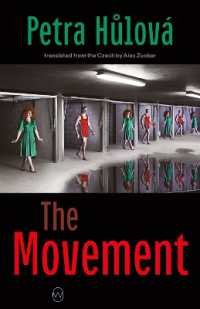Full Description
This book tells the relatively unknown story of Mura Dehn (1902- 1987) a white, Jewish dancer from Russia, once deemed among the most beautiful classical dancers in Europe, who emigrated to the United States in the 1930s.
For the first time the efforts of Dehn to record, analyse and champion the development of jazz dance in America during the 1930s, 40s and 50s are brought to life. The book celebrates and explores her long-term commitment to supporting and nurturing Black American jazz dancers, and devoting her life to heralding and chronicling its innovators and creators through performance, teaching and film-making.
This work includes both first-hand accounts with people who knew and worked with Dehn, including her company manager Allen Blitz, friend Eiko Otake, and notable urban dance scholars such as Sally Sommer; and material from Dehn's archival collection in the New York Public Library.
The book offers a flavour of the dance halls, the first places of social-racial integration in America, where jazz was born out of African-American social dances, and gives credence to the growing acceptance of this form of art as equivalent to classical dance and music.
Contents
Introduction - Cakewalk Not Only Moved The Feet, It Moved The World
Chapter I - Jazz Dance, The Soul Feeling of the Body
Chapter II - The Realization of Mura Maria Tsiperovitsch
Chapter III - The Dance Hall, the Dance Stage, and the Academy
Chapter IV - Swingsters, Masters, and Champions
Chapter V - Jazz Profound
Chapter VI - The Spirit Moves, A Life's Mission
Chapter VII - Part One Rag To Rock, The Program and Cast
Chapter VII - Part Two - Rag To Rock, The Africa Tour
Chapter VII - Traditional Jazz Dance Company 1969-1974
Chapter IX - Rhythm: A Driving Force
Chapter X - Lessons from the Academy
Endnotes
Bibliography
Index








